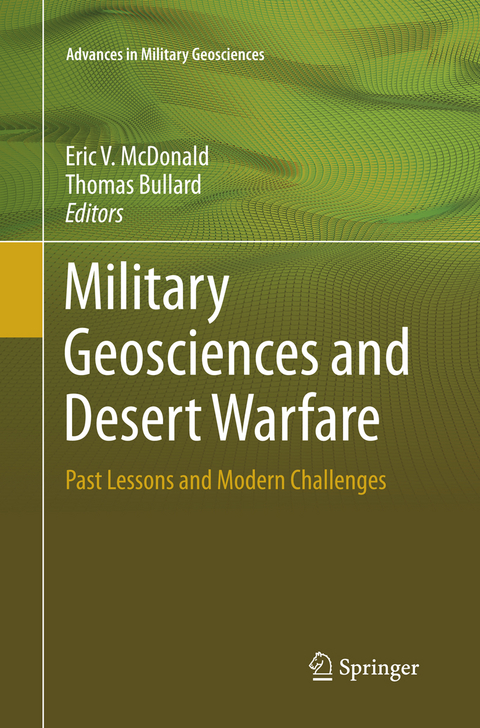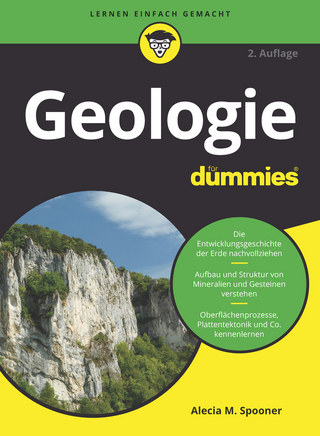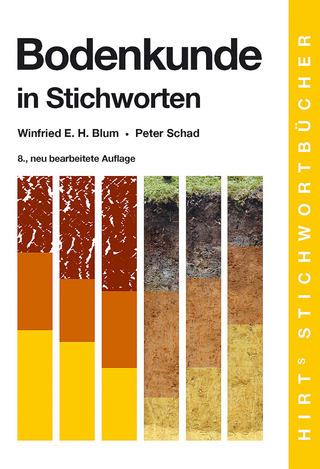
Military Geosciences and Desert Warfare
Springer-Verlag New York Inc.
978-1-4939-8048-2 (ISBN)
Dr. Eric V. McDonald is a research professor specializing in Earth and Ecosystem Sciences at the Desert Research Institute. His Research Areas of Interest and Expertise include Climate change, Environmental restoration and site characterization, Geochemical and hydrological analysis of soils and sediments, Landscape evolution, Quaternary geology, Soil landscape relations, Surface process geomorphology, Soil stratigraphy, Soil and surface water hydrology, and Vegetation and landscape dynamics. Dr. Thomas F. Bullard has more than 35 years of academic and professional experience in basic and applied research in geology and geomorphology related to landscape evolution, fluvial system behavior, landscape restoration, geologic hazards and hazardous waste disposal that includes: soils-geomorphic applications to landscape evolution in arid, semi-arid, alpine, and tropical regions; fluvial geomorphology; applied tectonic geomorphology research on blind thrust faults for earthquakehazard assessment; landslide investigations; geoarchaeology and cultural resources management. Research field areas include the southeast, southwest and western United States, Alaska, Argentina, Belize, Bolivia, Colombia, Costa Rica, Panama, Suriname, and Philippines.
Preface.- ‘An Unfortunate Accident of Geography’: Badlands and the ANZAC Sector, Gallipoli, April–December 1915.- From Army Outpost to Global Military Installations: How WW2 Transformed the Military Presence in the Southwestern United States.- Preparing for War in the Desert Southwest; From the California - Arizona Maneuver Area to the Yuma Test Branch (and beyond).- The Influence of Physical Geography on the Battle Of Kasserine Pass, Tunisia 1943.- The Influence of Geology And Geography on the Indian Wars in Eastern Washington Territory.- Teaching Military Geoscience in the 21st Century Classroom: Virtual Field Explorations of the Gettysburg Battlefield.- Fort Fisher North Carolina Past and Present: A Geospatial Analysis using LiDAR and GIS.- There’s Uranium in Them Hills: The Archaeology of Nevada's Uranium Boom.- Military Development and Geographic Change on San Diego Bay.- High Density Metal Contaminant Transport in Arid Region Ephemeral Channels.- Comparing Playa Inundation Estimates From Landsat and LiDar Data to a Doppler Radar-Based Hydrologic Model.- Environmental Security and Trans-Boundary Water Resources.- Environmental Reporting in the South African Department of Defense and Military Veterans.- Operation Iraqi Freedom (OIF) and the Use of Forwarding Operating Bases (FOBs).- U.S. Army Agriculture Development Teams, Afghanistan: The Role of the Geoscientist.- Regional Distribution of Salt-Rich Dust Across Southwest Asia Based on Predictiv
e Soil-Geomorphic Mapping Techniques.- Digital Elevation Models to Support Desert Warfare.- Military
Test Site Characterization and Training Future Officers – An Integrated Terrain
Analysis Approach.- Use of Ground-Based LiDAR for Detection of IED Command
Wires on Typical Desert Surfaces.- Parent Material Mapping of Geologic Surfaces
Using Aster in Support of Integrated Terrain Forecasting for Military
Operations.- Analysis of Recurring Sinking Events of Armored Tracked Vehicles
in the Israeli Agricultural Periphery of the Gaza Strip.- Integrated Terrain
Forecasting for Military Operations In Deserts.
| Erscheinungsdatum | 26.04.2018 |
|---|---|
| Reihe/Serie | Advances in Military Geosciences |
| Zusatzinfo | 104 Illustrations, black and white; XV, 375 p. 104 illus. |
| Verlagsort | New York |
| Sprache | englisch |
| Maße | 155 x 235 mm |
| Themenwelt | Naturwissenschaften ► Geowissenschaften ► Geologie |
| Naturwissenschaften ► Geowissenschaften ► Mineralogie / Paläontologie | |
| Technik ► Elektrotechnik / Energietechnik | |
| ISBN-10 | 1-4939-8048-3 / 1493980483 |
| ISBN-13 | 978-1-4939-8048-2 / 9781493980482 |
| Zustand | Neuware |
| Informationen gemäß Produktsicherheitsverordnung (GPSR) | |
| Haben Sie eine Frage zum Produkt? |
aus dem Bereich


